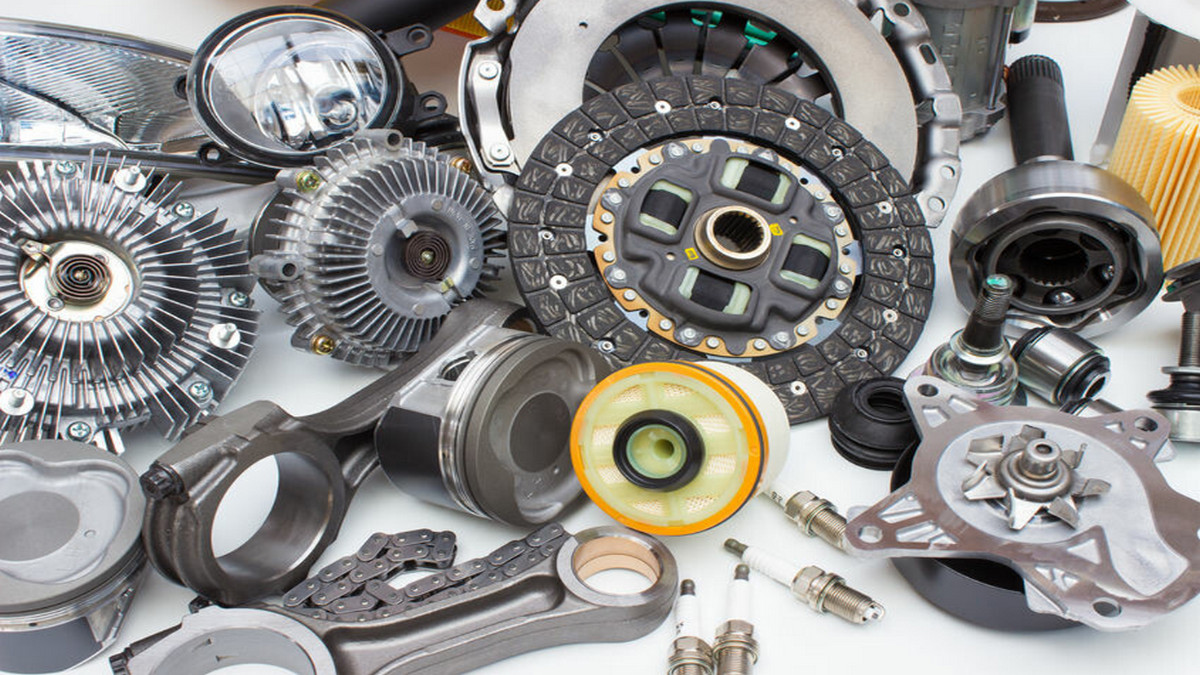Nanotechnology refers to the measurement, simulation, manipulation, and production of materials less than 100 nanometers in size.
What is nanotechnology?
Nanotechnology is the technology that studies the properties and structures of materials whose size has at least one dimension in the range of 1 to 100 nanometers.
Unlike specific technologies used in applications such as semiconductors, optoelectronics, and biotechnology, nanotechnology refers to application fields that unify any of these technologies. The emergence of nanotechnology has led to breakthroughs beyond normal technical limitations in various fields. Matter at the nanometer size will show completely different physical, chemical, or biological properties then when it is in the larger mass state. Therefore, small substances with new functions or novel physical properties can be produced at the nanometer scale. With this technology, new components, instruments, or systems are designed using nano sized materials.
Benefits of nanotechnology:
The use of nanotechnology can lead to the breakthrough of certain technical limitations. For example, the use of nanotechnology to produce quantum wires without resistance can reduce the heating and energy consumption of high-density and high-capacity electronic components. Or, by deliberately mixing specific impurities into an alloy, nanocrystal defects can be created in composite materials that can greatly increase the strength, plasticity, or corrosion resistance of nanofilms.
Using nanoscience, many nanoproducts have been developed and manufactured: The nanoization of gold particles can produce nano-gold catalysts with high catalytic ability. Gold is one material that can be used in the nano size. Nano-gold particle dyes can be produced with different characteristics and colors. Nano-sunscreen agents can improve the efficiency of UV blocking in sunscreen materials. Observing the variations in surface tension between nano-particles and liquids has led to the development of water and dirt resistant paints. Chip manufacturing technologies that make use of varying molecular forces are used to develop of biochips that can quickly detect diseases.
Nanotechnological breakthroughs have helped create nano products that bring more convenience in life. Nanomaterials produced by nanotechnology have many advantages, such as being lightweight, small size, and low in energy consumption. They use fewer materials to achieve better physical, chemical, and functional properties. They reduce environmental damage and increase sustainability.
The development of nanotechnology:
From technology development to industrial applications, nanotechnology has become mainstream in the international market. Since the 1970s, scientists in countries with advanced research technology, such as Europe, the United States, and Japan have invested in nanotechnology research. With the rapid development of nanotechnology, at the end of 1990s, the U.S. government announced the integration of industry, government, and academic research units to fully invest in the research and development of nanotechnology. Germany established the Nanotechnology Competence Center in 1998 to focus on nanotechnology development. Japan began to invest in nanotechnology research in 1991, and South Korea also began to invest in nanotechnology research and development, facility construction, and talent cultivation in the field of nanotechnology in 2001.
After 2010, various countries investing in nanotechnology began to change and adjust their development methods. Building on early developments in nanotechnology, they gradually transformed and applied this technology to new applications in fields such as defense, medicine, aerospace, etc. Investment in the development of nanotechnology has since become more and more specialized and detailed.
What are the nano application technologies?
-
Nanocrystalline materials:
When the microstructure of a substance is miniaturized, the ratio of surface atoms to internal material atoms increases significantly. The atomic behavior at the interface has a decisive influence on the properties of the substance. For example, nano-metal crystalline particles exhibit better strength, hardness, magnetic properties, and surface catalytic properties than larger particles. Ceramic materials with nano-crystals have higher ductility than ordinary ceramic materials, and are less likely to have brittle characteristics.
Due to the increase in strength of nanocrystalline metals, considerable application opportunities lie in structural materials in the automotive, aerospace, and construction industries. New nanocrystalline steels are frequently used in automotive products. Nanocrystalline material films can increase surface hardness, reduce friction, and improve heat and chemical resistance etc. They can be used in mechanical systems in industries such as automobile and aerospace. In biomedicine, nanocrystalline silver has antibacterial effects, while nanocrystalline titanium can be used in artificial joints.
-
Nano powder:
Nano powder is one of the most diverse and widely used types of nanomaterials. Nano powder manufacturing processes include solid-phase mechanical grinding, liquid-phase precipitation, sol-gel, chemical vapor deposition, etc.
-
Nano porous materials:
Such materials refer to porous materials with a pore size of fewer than 100 nanometers. They exist in nature as biofilms and zeolites, and their surface area is as high as 102 m2/g, which gives them high catalytic and adsorption properties. Nano porous materials can be prepared by sol-gel method, photolithography, ion beam, and other methods. Nano porous films can be coated with nanotube structures.
Nano porous materials can be used to develop improved catalysts for applications in the petrochemical industry. Due to their pore structure, nano porous materials have considerable application potential in membrane filtration, purification/separation, drug delivery, implantation devices, gene sequencing, and medical testing, etc. Nano porous film can be used as a low-dielectric material in the semiconductor industry. Nano porous silicon has special luminescence properties and can be used as a material for solid-state lasers. Nano porous carbon has high capacitance features which can be used for the development of batteries such as for laptops, mobile phones, and even electric vehicles.
-
Nanofiber and nanowires:
Nanofibers refer to relatively short fibers, including carbon fibrils, man-made polymer fibers, and alumina fibers. Electrospinning is a method of manufacturing man-made polymer nanofibers which can be combined with nanoparticles or nanotubes. Nano cables used in electronic engineering are generally made of inorganic materials such as metals or semiconductors (such as silicon and germanium), but can also be made of organic polymers. When nano cables are used to construct complex circuit systems, the challenge lies in maintaining proper connectivity between the cables.
Nanofibers can be used for reinforcement in composite materials and surface coatings. Electro spun nanofibers have increased strength and high surface area so are suitable for use as a reaction bed for nano powders in catalytic applications. Nanofibers can be made into fabrics with special properties such as chemical and water resistance, breathability, and anti-fouling. Nanofibers can be used as filter materials and scaffold materials for medical tissue engineering. They also have application potential in the fields of drug delivery media, sensors, and nanomotors. Due to their flexible photovoltaic properties and high surface area, they have been used for the development of special film for wearable solar cells.
-
Carbon Nanotubes (CNT):
Carbon nanotubes are tubular materials formed by crimping graphite planes. There are two types of carbon nanotube structures: single-layer and multi-layer. Carbon nanotube manufacturing methods include arc discharge, laser evaporation/stripping, chemical vapor deposition, vapor growth, electrolysis, and flame generation. Carbon nanotubes have many special properties, such as high tensile strength (~100Gpa), excellent thermal conductivity, and room temperature superconductivity. Its conductivity varies with different crimping methods. It can be used for nanowires or nano-semiconductors.
The application industries of nanotechnology:
The global focus of nanotechnology development has gradually evolved from focusing on electronic circuits in the past to industries such as the environment, energy, medicine, and biotechnology.
-
Environmental industry:
As various pollutants produced by industrial processes or human activities cause serious environmental pollution and threaten the survival of species on the earth, effective purification solutions are needed to solve them. Therefore, various governments and units have developed nanotechnology applications, such as nano-titanium dioxide concrete for air purification, carbon nanotube nets for water purification, ceramic nanofiber materials, and nanotechnology for purification of water by centrifugal spinning. Hollow fiber membranes, nano-iron particles for the treatment of groundwater pollution, nano-sensors for air pollution detection, carbon nano-films for water or solvent filtration, and sanitary sewage treatment nano-films are all being advanced with nanotechnology. Break throughs in nanoscience have been made that have expanded the limits of past products and produced materials for better quality purification.
-
Energy industry:
The development of nanotechnology in the energy industry mainly focuses on energy storage, including the development of nano-silicon-based anodes for high-performance lithium-ion batteries, 3D electrodes for electric vehicles, graphene supercapacitors, zinc oxide electrodes for bio-batteries, and hydrogen detection products such as metal nanoparticle sensors and graphene polymer batteries.
-
Biotechnology and medical care:
Nanotechnology in the field of medical diagnosis and treatment has developed rapidly. Developments in biotechnology include nanogold and laser heating of nanoparticles for treatment of cancer tumors, antibacterial and anti-allergic textiles, and nano peptide gels for cell cultures and plants.
The field of biomedical diagnostics is geared towards detecting, identifying, and quantifying nano-recognizable components in human body fluids that can aid in the early detection of diseases. For example, sensors have been developed that detect toxins in human sweat.
-
Electronic semiconductors:
The electronic semiconductor industry was one of the earliest industries to focus on the development of nanotechnology. The continuous miniaturization of nanocircuits in semiconductor materials is the direction pursued by world-renowned semiconductor manufacturers. The development of electronic applications includes silicon nano-films, optical components used in the manufacture of semiconductors, graphene lasers used in optical imaging, self-assembled nanoparticles, microelectronic components and microchips, wireless equipment and wearable devices, etc.
-
Textile industry:
Nanotechnology in the textile industry includes nano environmentally friendly textile process technology, polymer spray antifouling nanotechnology, silica textile waterproof coating technology, textile graphene oxide energy storage technology, etc.
"Sensors", "films", "electronic components" and "textiles" are currently the main applications of nanotechnology.
Nanotechnology will be the solution to energy issues:
- Nanotechnology applied to water, energy and environment enters mass production: The future challenge of nanotechnology is how to produce nanomaterials that make them reasonably priced. These unique nanomaterials are usually quite expensive due to the slow or complex manufacturing process. How to integrate nanomaterials with improved function and performance, whether in the laboratory-prototype stage or for mass production, will be the biggest challenge to the popularization of nanotechnology applications in the future.
- Rapid expansion of applications after commercialization of carbon nanomaterials: In the next few years, the manufacturing technology of carbon nanotubes will make significant progress, especially in terms of purity and structure control, and costs will be reduced due to the economies of scale achieved in mass production. These materials are commonly used in the fields of automobile, aerospace, and sporting goods, but the number of applications is rapidly expanding.
- Nanotechnology in the field of green energy focuses on continuous improvement of energy conversion efficiency: Nanomaterials and nanostructured surfaces are increasingly used in highly-advanced energy storage and conversion systems. Nanomaterials help to produce and use more energy-efficient products. Nano reaction technology reduces and controls the solid-solid reaction. Thermodynamics can greatly improve the energy storage performance of batteries, supercapacitors, and hydrogen storage materials. In the future, nanotechnology will continue to improve the efficiency of light-to-electricity, electro-to-chemical energy, and energy storage.
- Nanotechnology is likely to be an important key to solving the energy, resource, and environmental issues that humans are currently facing. Sensors used for detection of environmental problems, separation membranes used to solve water pollution problems, and nano products such as "nanomaterials" used in energy conversion issues are likely to change the appearance and pattern of existing industries in the future.














